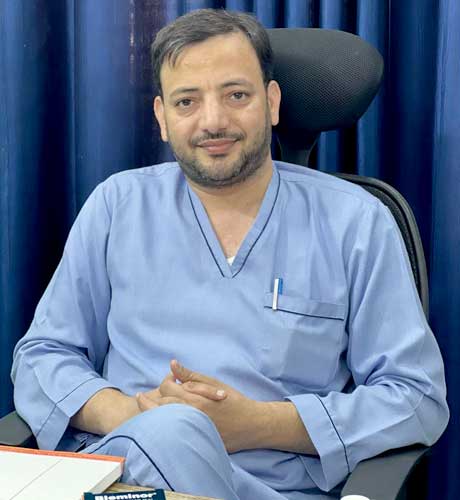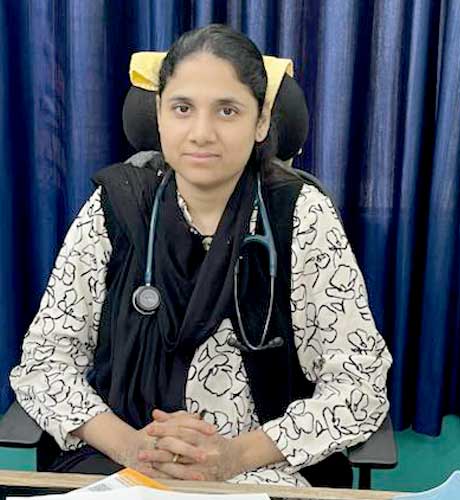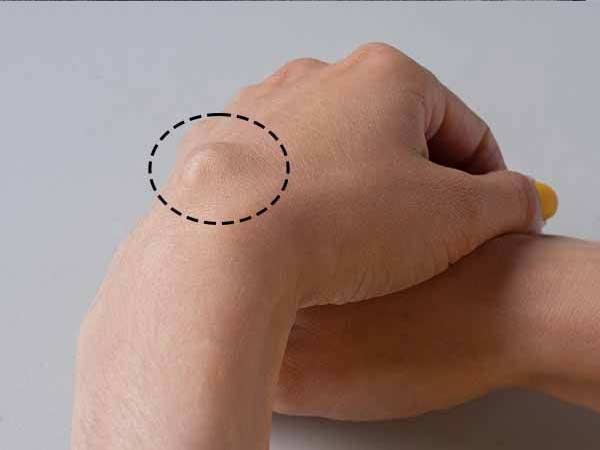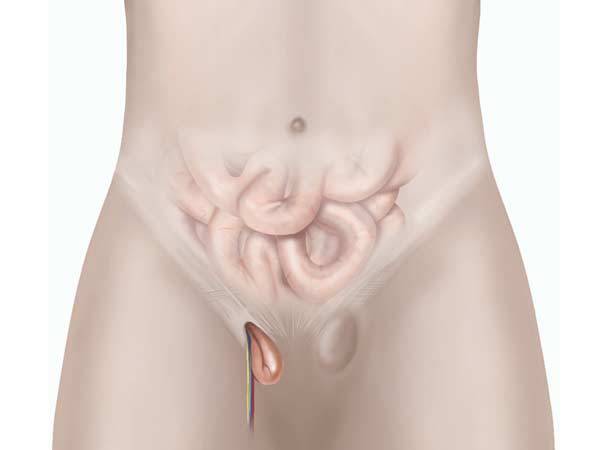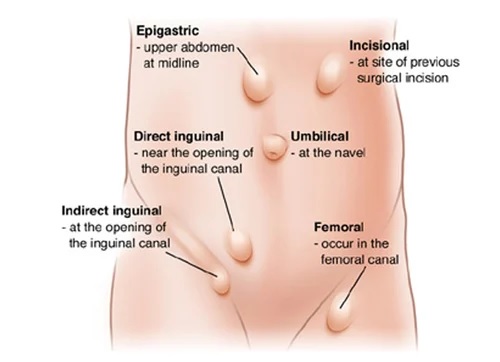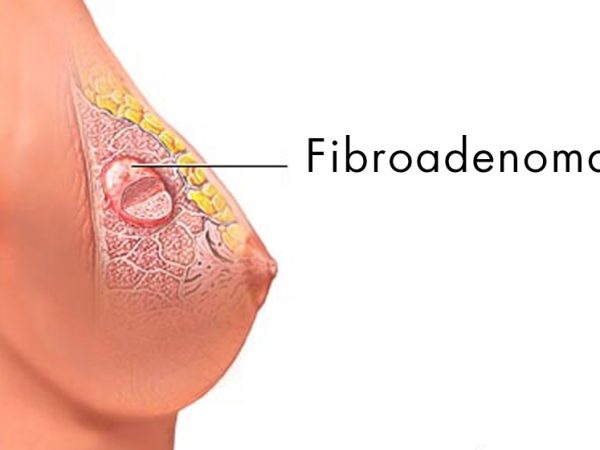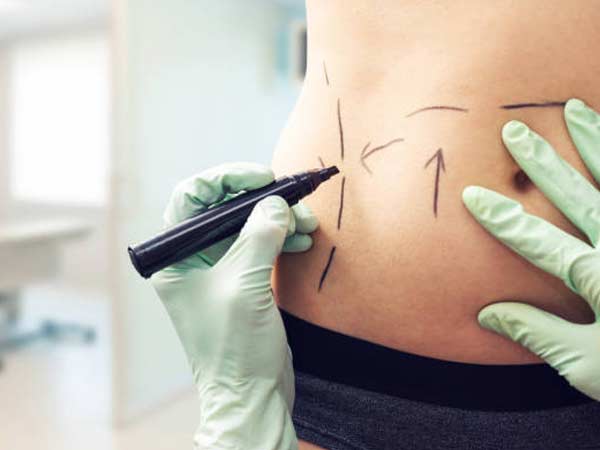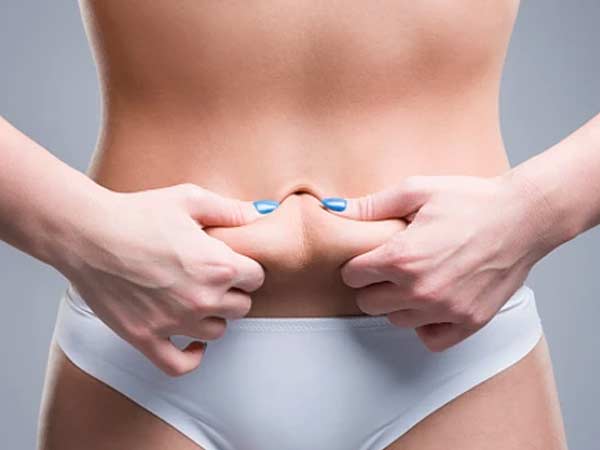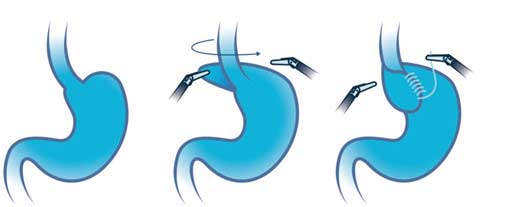
Gastroesophageal reflux disease occurs when stomach acid frequently flows into the tube that connects the mouth and stomach (esophagus). Acid reflux can irritate the lining of the esophagus. Gastroesophageal reflux disease can usually be controlled with medication. But if medications don’t help or you want to avoid long-term medication use, surgery may be indicated.
The intervention to solve gastroesophageal reflux disease is called a fundoplication. The surgeon wraps the upper part of the stomach around the lower esophageal sphincter to tighten the muscle and prevent reflux. Fundoplication is usually done with a minimally invasive (laparoscopic) procedure. The wrapping of the upper part of the stomach can be partial or complete.
Previous considerations.
Before any surgery, an assessment should be carried out by the anesthetist where they will advise you which medication you should stop taking and which you should continue taking. Sometimes you must be evaluated by another specialist if you have underlying diseases.
In the case of anticoagulant treatment or treatment that facilitates bleeding, the anesthesiologist, haematologist, cardiologist or family doctor will inform about the attitude to follow.
In the case of smoking, the habit should be stopped because it facilitates anesthetic management, smoker patients have more complications than smokers in anesthetic procedures.
It is recommended to perform moderate-intensity exercise before any intervention, unless there is a specific contraindication, such as walking at least 60 minutes a day.
How is the preparation prior to the intervention?
FOOD AND MEDICINE
In preparation for a fundoplication, your surgeon may ask you to:
- Do not eat anything before surgery. You can have a sip of water with your medications, but avoid eating and drinking for at least eight hours before surgery.
- Discontinue certain medications and supplements. Talk to your doctor about all medications and supplements you take. You continue to take most medications as directed by your doctor. Your doctor may ask you to stop certain medications and supplements because they can increase your risk of bleeding.
How is the surgery performed? (type of incision, resection, type of drainage, anesthesia)
BEFORE THE INTERVENTION
A fundoplication is done under general anesthesia, so you won’t be conscious during the procedure. Numbing medications are given intravenously into the arm. Once the medications take effect, the health care team will insert a tube down your throat to help you breathe. Your surgeon will perform the intervention using a laparoscopic or open procedure.
DURING THE PROCEDURE
Depending on your situation, your surgeon will recommend one of two surgical approaches:
Minimally invasive (laparoscopic) fundoplication
During a laparoscopic fundoplication, the surgeon makes four or five small incisions in the abdomen. A tube with a tiny video camera is inserted into your abdomen through one of the incisions. The surgeon watches a video monitor in the operating room while using surgical tools inserted through the other incisions in the abdomen to wrap the upper part of the stomach around the lower esophageal sphincter, tightening the muscle and preventing reflux. According to the studies carried out before the intervention, the surgeon will decide whether to perform a complete or partial fundoplication. The incisions are then sutured and you are moved to a recovery area. A laparoscopic fundoplication can take one to two hours.
A laparoscopic fundoplication is not appropriate for everyone. In some cases, the surgeon may start with a laparoscopic approach and determine that a larger incision is necessary due to scar tissue from operations, previous complications, or an inability to safely continue with the procedure.
Traditional (open) fundoplication.
During an open fundoplication, the surgeon makes a 6- to 8-inch incision in the middle of the abdomen above the navel. Muscle and tissue are retracted to reveal the stomach. Next, the surgeon performs the fundoplication by wrapping all or part of the stomach around the esophagus.
The incision is sutured and you are taken to a recovery area. An open fundoplication takes one to two hours. It is usually performed when the procedure cannot be carried out with maximum safety through the laparoscopic approach.
What happens after the surgery?
After surgery, the patient slowly awakens from the effects of the anesthetic drugs, so they may have a feeling of not remembering the process. He will spend a short period of time in an area called post-anesthetic recovery, before being taken to his room.
HOW IS THE RECOVERY IN THE HOSPITAL?
It is possible to feel nausea or abdominal pain after the intervention but they will be controlled with the prescribed medication. After about 8 hours, it will begin with the intake of liquids and the next day, pureed food. We recommend sitting down and starting to walk about 8 hours after the intervention. You will be supervised by nursing staff at all times.
If your surgery goes uneventfully, you will usually go home the next day.
HOW IS THE RECOVERY AT HOME?
Our premise is to be active in recovery. For this reason, we encourage the patient to walk daily, we recommend walking at least 60 minutes each day both inside and outside the house. Important physical efforts that may affect wound healing should always be avoided.
When you are discharged home, you will be prescribed medication to make you feel as comfortable as possible. You will resume your previous medication following the surgeon’s recommendations, since some drug may not be recommended in the first days after surgery. Normally the taking of painkillers is indicated to control the pain and the injection of heparin to avoid the appearance of thrombi in your legs.
In relation to food, we recommend eating a pureed diet for the first week until your esophagus and stomach adapt to this new situation. Subsequently, a soft diet with easy-to-digest foods will be reintroduced and meals will be divided into five times throughout the day and with less quantity. Three or four weeks after the intervention, you will reintroduce your usual diet.
You can wet your wounds when you wash yourself and then gently dry them with the application of any antiseptic (chlorhexidine, povidone-iodine, crystalmine…). These wounds should be evaluated by nursing around 7 and 10 days after surgery.
Virtually full recovery may take approximately three to four weeks for laparoscopic fundoplication. However, in open fundoplication, once at home, full recovery may take a little over four weeks.
What are the risks of gastroesophageal reflux disease surgery?
The normal thing is that your intervention proceeds without incidents but you must know the potential complications.
Infrequent and frequent risks: Infection or bleeding of the surgical wound, phlebitis. Difficulty burping, transient difficulty swallowing. Prolonged pain in the area of the operation. Laparoscopic surgery may cause gas extension to the subcutaneous tissue or other areas and referred pain, usually to the shoulder.
Infrequent and serious risks: Bleeding or intra-abdominal infection. Viscera perforation. Stenosis. Significant difficulty swallowing. Reproduction of gastroesophageal reflux. Due to laparoscopic surgery, there may be vascular injuries, injuries to neighboring organs, gas embolism and pneumothorax.
These complications are usually resolved with medical treatment (medicines, serums, etc.), but they may require a reoperation, usually an emergency, and in exceptional cases death may occur.
Your risk of complications depends on your overall health and the reason you’re having a fundoplication.

